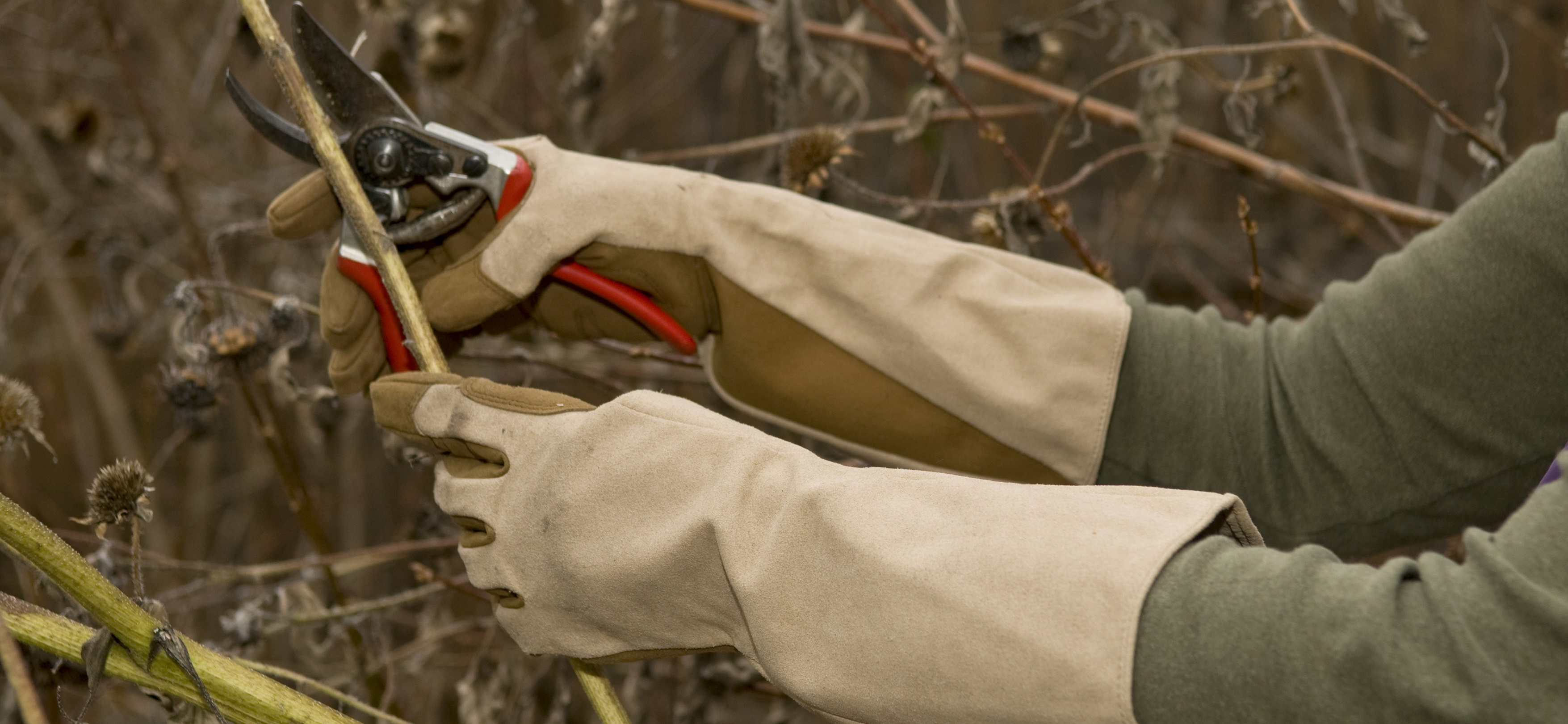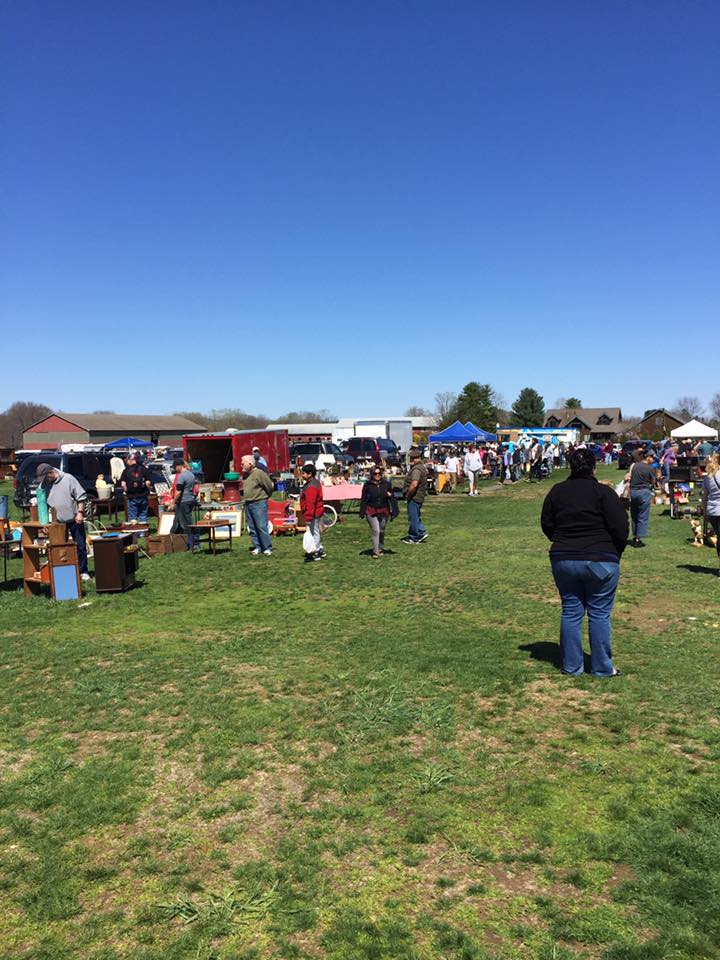
Gardening
Early Spring Preparation for a Beautiful Summer Garden

When pruning, start by removing the damaged and diseased stems of shrubs and roses and wear heavy duty gloves to keep yourself free from scratches.
Photo credit: Photo courtesy of foxglovesinc.com
As winter fades into spring, gardeners can’t wait to get busy in the garden. Pruning, cutting back perennials and ornamental grasses and preparing the garden for spring planting are just a few of the tasks. Keep yourself and the pollinators overwintering in your garden safe as you start the cleanup process.
Always prune with a purpose. Start by removing any damaged and diseased stems from shrubs and roses. Watch for insects like swallowtail butterflies that overwinter in protective cocoons and the egg masses of some like the hairstreak butterflies. Prevent problems by destroying overwintering non-native pests like the gypsy moth. Search the internet and insect books for help identifying the good and bad guys you may find in your landscape.
Additional pruning may be needed to manage the size and shape or encourage better flowering and bark color. Wait to prune spring flowering shrubs like lilacs and forsythia if you want maximum flowering. Prune these shrubs right after flowering before they set their floral buds for next spring.
Keep yourself safe by wearing safety glasses and gloves. It’s too easy to focus on the task and end up with a stick in the eye. Heavy duty gloves protect and support your hands, allowing you to garden longer with less stress, scratches and bruises. Consider synthetic leather gauntlet style gloves like Foxgloves extra protection gloves (foxglovesinc.com) that protect hands and forearms from harm yet are supple enough to allow you to work efficiently. The breathable fabric is durable, machine washable and puncture resistant.
Lightly rake any debris off the lawn and add it to the compost pile. Check for damage and lightly tamp any disturbed areas back in place. Reseed bare spots so grass, not weeds, fill in these spots.
Brush leaves off the crowns of perennials but leave the rest in place for insects that spend winter or summer in the leaf litter. Plus, the leaves help preserve moisture, suppress weeds and improve the soil as they break down.
Pull mulch away from tree trunks and shrub crowns that may have shifted over winter. Keeping mulch off the stems reduces the risk of future problems that can lead to decline and even death of the plants.
Leave perennials and grasses stand as long as possible since many are homes for beneficial insects. Bundle grasses for easy cutting and removal. Once cut, loosely stack or stand perennial stems and grasses at the edge of the garden or natural spaces. This allows any insects still present to safely emerge when it’s time to move to their summer homes. Plus, birds will appreciate the easy access to nesting material.
Enjoy the changing of the seasons and the beauty of nature hidden among the plants in your garden. Protect yourself when preparing the garden for spring so you won’t lose time recovering from injuries. And keeping the pollinators and other beneficial insects safe will improve your garden’s health and productivity throughout the growing seasons.
Melinda Myers has written more than 20 gardening books, including Small Space Gardening. She hosts The Great Courses “How to Grow Anything” DVD series and the Melinda’s Garden Moment TV & radio segments. Myers is a columnist and contributing editor for Birds & Blooms magazine and was commissioned by Foxgloves for her expertise to write this article. Her web site is www.MelindaMyers.com.
Antiques
Flea market season has started

We’ve sprung forward with our clocks and spring officially begins on March 19th. It’s time to start planning trips to your favorite flea markets again, or visiting new ones.
Those of you reading this column are more likely interested in flea markets with antiques and collectibles than t-shirts and food products. Check websites before you go, and you should be able to get a pretty good idea of what you will find. Also be sure to check to see the dates when outdoor flea markets open. Some good local flea markets have permanently closed, but others have opened in the area to take their place. You may want to call or email the flea market you plan to attend to get details before traveling there.
Some long running flea markets are right in our backyard. Most of you should be familiar with the Grafton Flea Market, Charlton Flea Market, and Douglas Flea Market.
The Rietta Flea Market in Hubbardston is one of the largest in the area. They are open on Sundays beginning sometime in April. Their website says “for as long as most of us can remember, Rietta Flea Market has been one of the largest and most popular flea markets in the Northeastern U.S.”
Another nearby flea market is in Sturbridge. The Sturbridge Flea Market’s website describes it as “3 Levels & 150+ Dealers 1000's of unique items at fair prices!” Traveling a little further west on Route 20, you will reach the Yankee Flea Market. Their website description is “ … home to over 165 vendors in our 15,000 square foot indoor market. We have everything from new to old, vintage to antique.” Even further west you will find the Flea Market at Eastfield Mall in Springfield. Their description is “upscale resale, craft, art and antique vendors in a unique climate-controlled market space.”
Another one where I have made good finds is the Olde Hadley Flea Market. The fields are typically full of vendors on days with nice weather. Kev's Barnyard of Granby, MA is a newer flea market. They describe the market as a “wide array of merchandise from antiques to pre-owned items and furniture. Our co-op sits inside a historical 19th century post and beam, New England barn.”
Traveling north, the Hollis Flea Market is a good option. It claims to be the longest and oldest running flea market in New Hampshire. Todd’s Farm in Rowley, MA invites you to “Be Up Before the Cows!” They tout over 240 vendors from New England and New York.
In Connecticut, websites for the Eastern Connecticut Flea Market in Danielson and Elephant Trunk in New Milford note that they are open regularly. There will also be a special one-day flea market on Saturday, May 16th at 9:00 AM sponsored by the Salmon Brook Historical Society in Granby. In the next state over, there is a regularly running flea market at the General Stanton Inn in Charlestown, RI.
Other flea markets are a short drive away. The Somerville, MA Flea Market claims that “the majority of our vendors deal in vintage and antique wares that have been reclaimed restored and repurposed.” If you vacation at the Cape, the flea market at the Wellfleet Drive-in typically has vendors selling antiques.
Lastly, an article on flea markets wouldn’t be complete without including the Brimfield Antique Flea Market. The 2020 dates are May 12-17, July 14-19, September 8-13. I hope to see you on the fields!
I’ll be presenting on antiques for The Sturbridge Rotary Club on March 18th. I’ll be appraising items for the Douglas, MA Historical Society on May 3rd. Other events are being scheduled. Please see www.centralmassauctions.com for details on these and other events.
Contact us at: Wayne Tuiskula Auctioneer/Appraiser Central Mass Auctions for Antique Auctions, Estate Sales and Appraisal Services www.centralmassauctions.com (508-612- 6111) info@centralmassauctions.com